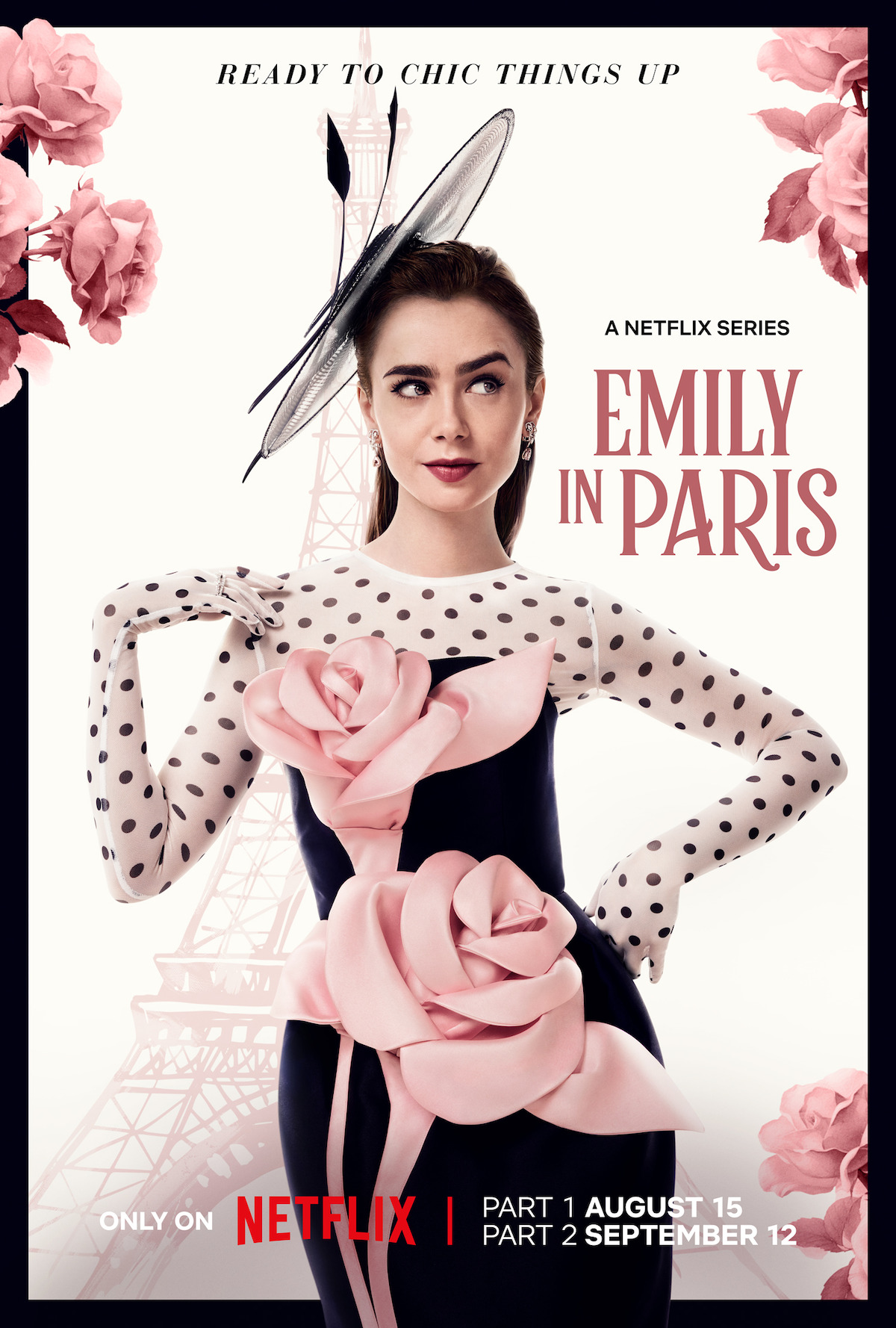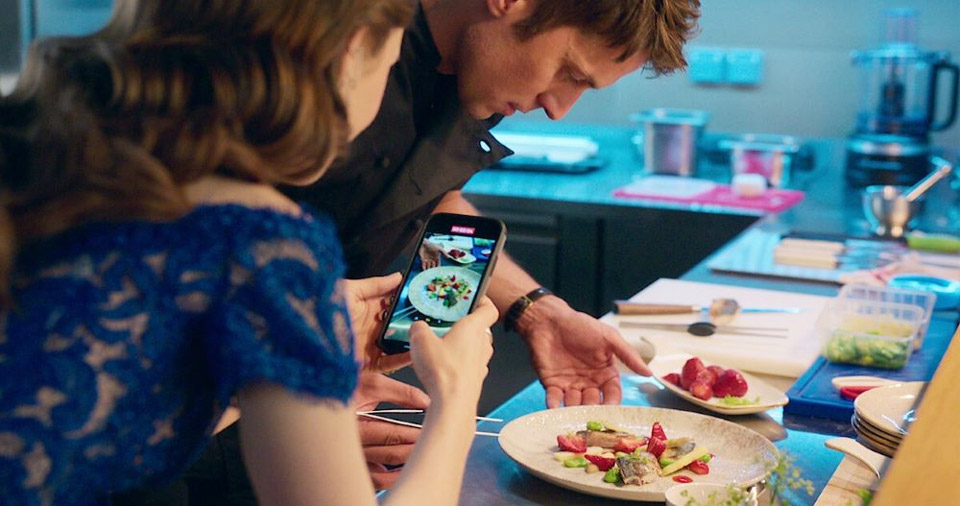Can you describe your job?
Caroline Le Touzé: I take part in a film or series when it includes a specific food sequence. I propose a precise scenography, work on the dishes’ colors but also their textures according to what is written in the scenario. A close-up of specific dishes requires, indeed, to propose a coherent visual representation, which also has to be as photogenic as possible. I obviously have to take into consideration the actors’ tastes and possible allergies since they will have to eat the food when the camera rolls.
What sets you apart from a classic chef or baker?
Our specificity has to do with the technical aspects linked to the constraints in film-making processes. A classic pastry chef can, of course prepare an impeccable dessert, but it may not withstand the test of a film shoot: it is often very long and the lighting considerably warms the atmosphere. Take ice cream for instance: I will come up with something that has a suitable texture, more resistant, while remaining edible. On screen, the illusion of the dessert in question must obviously be perfect. It’s a very technical job. We are also in charge of placing the dishes on set. Therefore, we need to work very closely with the production designer and the prop master.
How did you get into this profession?
A friend of mine who is an artistic director in the film industry called on me to work on movie sets. I should point out that before that, I had no connection with the film and audiovisual sector, even if I had participated in a pastry television show and contributed to a blog on the subject. Originally, I am a pharmacist. The common point between these two professions is chemistry; to obtain specific colors in the kitchen, you sometimes have to become a laboratory assistant! Everything accelerated in 2022 when I was hired on HBO’s “Julia’’, a series dedicated to legendary TV cook Julia Child. Child popularized French gastronomy in the United States. I was the assistant of Christine Tobin, a well-known American food stylist. She taught me all the secrets about this craft, in particular, how we could be involved from the moment we read the script, make proposals well in advance of filming and support the entire process of a feature film or series. If food styling is booming in France, the profession has been well established across the Atlantic for about twenty years. I wouldn’t be surprised if The Oscars added a new category for food styling in a few years.
At what stage do you join in a film or series? Is there a rule?
The ideal is of course to take part in the project as early as possible in collaboration with the director of photography, the director and even the costume designers, to clearly define the harmony of colors. Then, we provide them with a trend book with a full color scheme based on the dishes and visual details they are looking for. Certain dishes must shine on screen for example, sometimes you have to play with shadows… These aspects need to be discussed to identify the atmosphere they want to create. From there, we work more concretely on making the dishes by offering a whole range of proposals. Sometimes directors have a very precise idea so, in this case, we comply with their wishes.
Can you share concrete examples with us?
We are currently working on a series directed by Amy Sherman-Palladino and Daniel Palladino, part of which takes place in France and which will be released next spring. The brief for the food-related aspects of one of the scenes stated a “very colorful” atmosphere. So we proposed trends with a whole gradient of bright colors. First, we started with purple colors by proposing food that matched the tones... Then, the artistic director fine-tuned his requests so that we could propose even more dishes. Once the colors were approved, we were free to define the scenography and therefore the dishes ourselves. For one of the scenes of “Emily in Paris’’ season 4, the request was even more specific. It was about providing fairly “luxury” desserts with a particular technical request consisting of unveiling a special color tone when cutting one of the desserts.
You mentioned above that all your dishes, even those reinvented for the occasion, must be edible. Why is that?
An actor must always be led to eat a dish even if, because of the techniques we use (for fake ice cream in particular), it doesn’t taste delicious! Actors also have to be able to cut food and grab a piece of it. It has to remain appetizing. In France, fake food is still rarely used in movies and when it is, it mainly applies to background scenery.
Is being French an asset at international level?
On “Julia’’, I was what they called “French culinary advisor’’. We were two actually with Christophe Gournay, who spent four weeks in the South of France, in charge of overseeing everything relating to French food; we started to work while the writing was underway, so we had the opportunity to provide direction and sometimes make proposals. On set, we also advised on how to serve the dishes, how to cut the bread... On some productions, however, we work in a way that seems to correspond to a more English-speaking world’s vision of French culture. But if it pleases the client, I comply. Our role is to know how to adapt.
Do you often work as a team?
Of course. I am partnering with Ange Macias, who a few years ago created an events company linked to the culinary arts, M&M Food Agency. She is also artistic director. We combined our skills to be more efficient and we founded Wallace Studio.
Is your profession well established in France?
It is not completely mainstream yet, but it is growing more and more. It is up to us to show our specific approach, to prove our added value. A film like “The Taste of Things’’ (on which I did not work) required the input of food stylists. I notice that food is nearly nonexistent in French movies. Take “The Count of Monte Cristo’’ released recently, it’s a great movie but where are the food scenes? My clients mostly are from the English-speaking world. I worked on several scenes on series like “The Crown’’, “Atlanta’’, “Slow Horses’’, “Emily in Paris’’… I also worked on “The Killer’’ by David Fincher, especially on the Parisian café sequence.
How did you end up working on “Emily in Paris’’?
A regular chef works on the series and takes care of the majority of the dishes and desserts. One day, however, they urgently needed a specific cookie. One of the prop masters came to see me in my biscuit shop in the 6th arrondissement. We hit it off straight away. The fact that I was a food stylist on shoots surely helped her to contemplate our collaboration; I already had the codes associated with the job and the knowledge of the technical constraints linked to food on a set. In the end, Ange Macias and I worked on four other sequences of season 4. “Emily in Paris’’ is a series that pays close attention to visual features. It was very exciting for us to contribute to this.
What is your role when the camera rolls?
In addition to preparing the dishes beforehand, we arrange them on set, we set the table... I would compare it to a still life painting, with this constant connection between matter and light. We really enjoy working with the film industry. Ange and I are dreamers and still enchanted by cinema. We try to bring even more wonder with our food designs!
EMILY in paris - season 4

Director: Andrew Fleming
Casting: Ashley Park, Lily Collins, Lucas Bravo, Lucien Laviscount, Philippine Leroy-Beaulieu
Production Services Company: EIP Production LLC
Line Production : Firstep
Broadcasting: Netflix / Part 1 on August 15 and Part 2 on September 12





